Hokkaido and more
- Sort by
- Popularity
- Name
-
Kamakura-bori lacquerware Kamakura bori
- Lacquerware
- Kanagawa
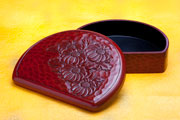
Kamakura-bori is a type of lacquer ware made in the area around the city of Kamakura in Kanagawa prefecture. The tradition dates back to the Kamakura period (1185-1333) when Tsuishu and Tsuikoku, thickly lacquered wooden wares, were imported from …
View more
-
Hakone wood mosaic Hakone yosegi zaiku
- Wood, bamboo crafts
- Kanagawa
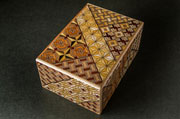
Hakone yosegi zaiku is a form of marquetry produced in the town of Hakone, Kanagawa prefecture, an area renowned for having the most natural environment in Japan. For this reason, there is a rich variety of tree species found on Mt. Hakone. Such a…
View more
-
Ojiya chijimi textiles Ojiya chijimi
- Woven textiles
- Niigata
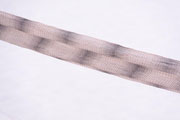
Ojiya chijimi textiles (called Ojiya chijimi in Japanese) is a handicraft produced from ramie in the area around the city of Ojiya in Niigata prefecture. Ramie is a tall plant of the nettle family that has been used to make cloth for centuries. R…
View more
-
Takaoka copperware Takaoka doki
- Metal works
- Toyama
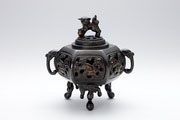
Takaoka copperware (called Takaoka doki in Japanese) is a type of copperware produced in the area around the city of Takaoka in Toyama prefecture. The various products range from small items such as indoor ornaments, Buddhist tools, and vases to l…
View more
-
Inami wood carvings Inami chokoku
- Wood, bamboo crafts
- Toyama
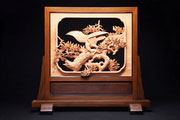
Inami woodcarvings (called Inami chokoku in Japanese) are produced in the city of Nanto, Toyama prefecture mainly in the form of transoms*, decorative objects, and single-leaf screens**. They are usually made of Japanese camphor, paulownia, or zel…
View more
-
Tsuboya ware Tsuboya yaki
- Ceramic
- Okinawa
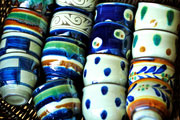
Tsuboya ware (called Tsuboya yaki in Japanese) is a form of pottery produced mainly in Tsuboya, city of Naha, Okinawa prefecture. This craft is one of the leading representations of Okinawan pottery (yachimun in the Okinawa dialect). The notable f…
View more
-
Miyako ramie textile Miyako jofu
- Woven textiles
- Okinawa
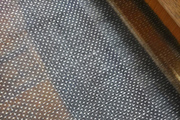
Miyako jofu is a textile produced on the island of Miyakojima, Okinawa prefecture. It is woven from a fabric called ramie and dyed with Ryukyu indigo, a type of indigo native to Okinawa. This textile has a fine kasuri pattern* and a smooth and lu…
View more
-
Ryukyu lacquerware Ryukyu shikki
- Lacquerware
- Okinawa
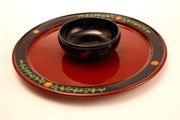
Ryukyu lacquerware (called Ryukyu shikki in Japanese) is produced in Okinawa prefecture. Lacquerware techniques imported from China were well-adapted during the development of Ryukyu lacquerware unique to Okinawa. The technology and artistry invol…
View more
-
Shiozawa tsumugi silk Shiozawa tsumugi
- Woven textiles
- Niigata
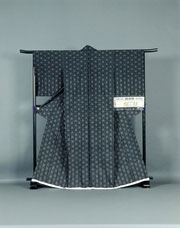
Shiozawa tsumugi is a silk textile produced in the former town of Shiozawa (now a part of the city of Minamiuonuma), Niigata prefecture. The area is known for its heavy snowfall and wet winter climate which are ideal for weaving. Echigo jofu, a fa…
View more
-
Shodai ware Shodai yaki
- Ceramic
- Kumamoto
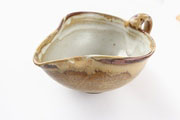
Shodai ware (called Shodai yaki in Japanese) is a form of pottery baked mainly in the northern part of Kumamoto prefecture. This craft is distinguishable because of its simple texture, strong form, and bold design, which is due to the pouring meth…
View more
-
Yamaga lanterns Yamaga toro
- Other crafts
- Kumamoto
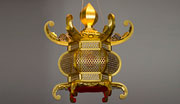
Yamaga toro are lanterns made of washi (traditional Japanese paper) produced in the area surrounding the city of Yamaga, Kumamoto prefecture. For the Yamaga Lantern Festival, an annual summer event, this craft is worn by one thousand dancing women…
View more
-
Kumejima tsumugi silk Kumejima tsumugi
- Woven textiles
- Okinawa
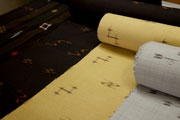
Kumejima tsumugi silk is a textile produced on the island of Kumejima, Okinawa prefecture. The history of this craft goes back all the way to the Muromachi period (1336-1573). This textile is distinct because of its elegant texture and deep color …
View more
-
Ryukyu traditional resist-dyed textiles Ryukyu kasuri
- Woven textiles
- Okinawa
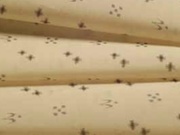
Ryukyu kasuri is a textile made in Okinawa prefecture. It is made mostly from silk and dyed with both plant and synthetic dyes using a kasuri* or resist-dyeing technique. This craft features over six hundred different kinds of patterns inspired by…
View more
-
Takaoka lacquerware Takaoka shikki
- Lacquerware
- Toyama
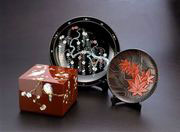
Takaoka lacquerware (called Takaoka shikki in Japanese) is produced in the area around the city of Takaoka, in Toyama prefecture. A defining feature of this lacquerware is the wide range of techniques and styles. Aogai-nuri is a technique that use…
View more
-
Kiryu brocade Kiryu ori
- Woven textiles
- Gunma
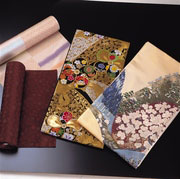
Kiryu brocade (called Kiryu ori in Japanese) is a woven cloth produced in the city of Kiryu, Gunma prefecture. This area has a lush environment with excellent climate and terrain, helping it to be prosperous in the silk industry for years. Kiryu i…
View more
-
Chibana-hanaori textiles Chibana hanaori
- Woven textiles
- Okinawa
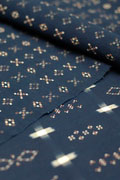
Chibana hanaori is a textile produced in Chibana, Okinawa, Okinawa prefecture. It has flowery patterns woven in the base textile as well as a continuous geometric pattern. This kind of textile with a continuous geometric pattern is called mon orim…
View more
-
Hon-shiozawa silk Hon shiozawa
- Woven textiles
- Niigata
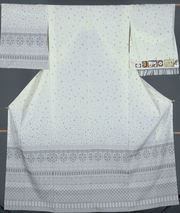
Hon-shiozawa is a textile produced in the former town of Shiozawa (now a part of the city of Minamiuonuma), Niigata prefecture. It is one of the textiles that represent the region, which is famous for linen and silk textile production. This craft …
View more
-
Odawara lacquerware Odawara shikki
- Lacquerware
- Kanagawa
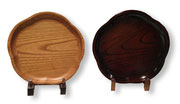
Odawara lacquerware (called Odawara shikki in Japanese) is a type of lacquerware that is made in the city of Odawara, Kanagawa prefecture. It features a glossy lacquer finish which highlights the elegant grain of the wood material. While beautiful…
View more
-
Ojiya tsumugi silk Ojiya tsumugi
- Woven textiles
- Niigata
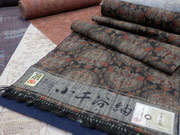
Ojiya tsumugi is a silk fabric produced in the area around Ojiya, Niigata prefecture, which is a city known for heavy snow. Echigo jofu, a textile made of ramie, has been produced in this area for over a thousand years. As new weaving techniques …
View more
-
Yaeyama cotton cloth Yaeyama minsa
- Woven textiles
- Okinawa
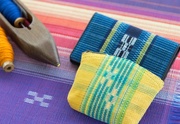
Yaeyama minsa is a fabric produced in the town of Taketomi, Yaeyama district and the city of Ishigaki, Okinawa prefecture. The origin of this craft is not clear but it is thought that the kasuri belt was brought to Okinawa from Afghanistan via Chi…
View more
-
Yaeyama ramie cloth Yaeyama jofu
- Woven textiles
- Okinawa
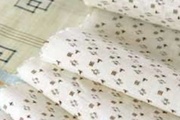
Yaeyama jofu is a fabric produced in the area surrounding Yaeyama ward in Ishigaki city, Okinawa prefecture. This textile is woven with hand-spun ramie threads and used to be produced as a tax to the Ryukyu Kingdom (present day Okinawa) in ancient…
View more
-
Niigata lacquerware Niigata shikki
- Lacquerware
- Niigata
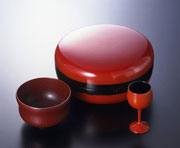
Niigata Lacquerware (called Niigata Shikki in Japanese) is a form of lacquerware produced in the area around the city of Niigata, Niigata prefecture. This craft has various coating techniques such as hana-nuri, ishime-nuri, nishiki-nuri, isokusa-n…
View more
-
Shuri brocade Shuri ori
- Woven textiles
- Okinawa
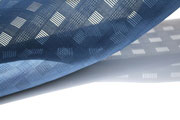
Shuri brocade (called Shuri ori in Japanese) is a woven fabric produced on the main island of Okinawa. There are two types of fabric, kasuri orimono and mon orimono, and these include hanaui, hanakura ori, doton ori, kasuri and minsa. The Ryukyu …
View more
-
Yomitanzan-hanaori textiles Yomitanzan hanaori
- Woven textiles
- Okinawa
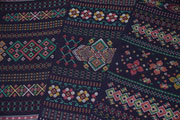
Yomitanzan hanaori is a textile produced in the village of Yomitan, Okinawa. The threads of this craft are first dyed before being woven in a geometric, flowerlike design. This craft is woven with silk or cotton threads dyed with plant-based dyes …
View more
-
Amakusa ceramics Amakusa tojiki
- Ceramic
- Kumamoto
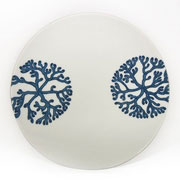
Amakusa ware (called Amakusa Tojiki in Japanese) is a form of pottery or porcelain baked in the Amakusa region of Kumamoto prefecture. The name was newly applied when the craft was designated as a national traditional craft. In Amakusa, where high…
View more
-
Echu traditional Japanese paper Echu washi
- Traditional Japanese paper
- Toyama
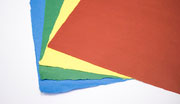
Etchu washi is traditional Japanese paper made in Asahi, Yatsuo, and Taira in Toyama prefecture. Each production area makes their own type of washi which are called Gokayama washi, Yatsuo washi, and Birudan washi. This craft has slight regional va…
View more
-
Kamo traditional chest Kamo kiri tansu
- Wood, bamboo crafts
- Niigata

Kamo Kiri Tansu are chests of drawers made of paulownia wood that are produced in and around the city of Kamo, Niigata prefecture. Today, a majority of all paulownia chests made in Japan are produced in Kamo. This craft can keep clothes safe from …
View more
-
Isesaki traditional resist-dyed textiles Isesaki kasuri
- Woven textiles
- Gunma
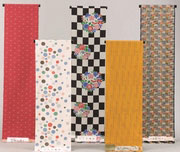
Isesaki Kasuri is a type of woven fabric produced in Isesaki, Gunma prefecture. Mainly used for kimono, this fabric has been admired for its texture since ancient times. Today, neckties and shop curtains called noren in Japanese are also produced.…
View more
-
Murakami carved lacquerware Murakami kibori tsuishu
- Lacquerware
- Niigata
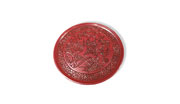
Murakami Carved Lacquerware (called Murakami Kibori Tsuishu in Japanese) is produced in the area around Murakami, Niigata prefecture. The region, which was formerly the Murakami domain, has been famous for its production of natural lacquer since t…
View more
-
Nibutani carved wooden tray Nibutani ita
- Wood, bamboo crafts
- Hokkaido
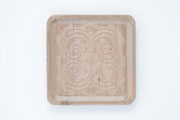
Nibutani Carved Wooden Trays (called Nibutani ita in Japanese) are produced in Biratori, Hokkaido. The origin of the town name, is an Ainu language word for cliff, pirauturu. This craft is known for its patterns like a spiral pattern called moreun…
View more

































































































































































































































































































